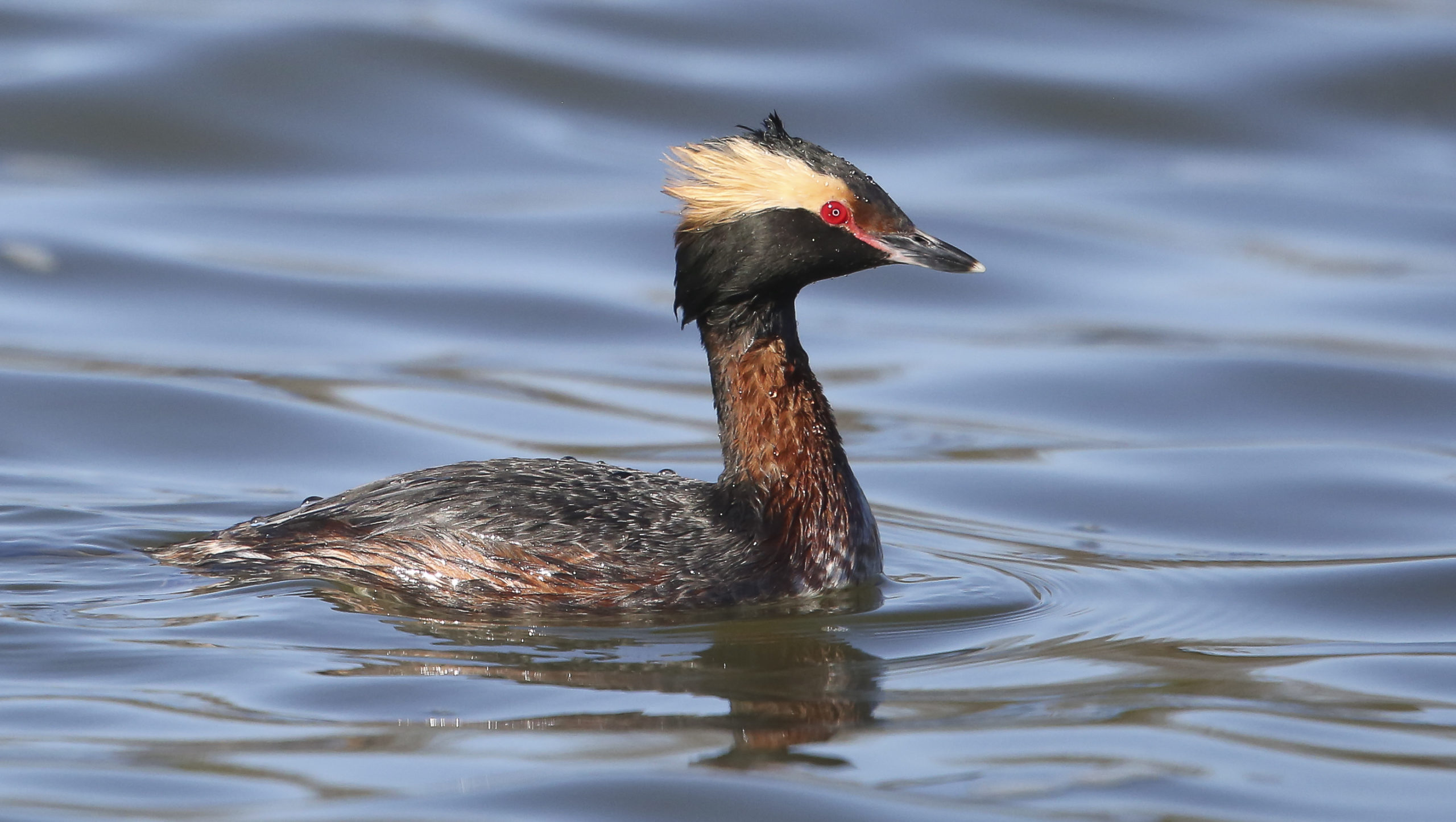Late Winter’s Winged Visitors

By Wayne Bierbaum
My favorite time for studying and taking photos of waterfowl is late winter. Birds overwintering from the far north start mingling with early birds returning from farther south. The red-breasted mergansers (see Jan. 13’s Creature Feature) can be seen swimming with horned grebes.
Horned grebes have an unusual migration pattern. They spend their summers on lakes and rivers in northwestern Canada, nesting near the shoreline in vegetation and on floating plant rafts. After raising a brood of three to eight, the parents prepare their young to fly southeast across North America for the winter. Most other species in the west migrate into Central America. This is why grebes show up in great numbers in the Chesapeake Bay.
Horned grebes are small diving birds that feed in shallow water, eating crayfish, crabs, fish, and insects. They have straight and fairly short, pointed bills for probing crevices. They stay underwater for less than five minutes but swim quickly while under.
They feed in the shallows and are commonly found along the shoreline which makes them easy to see but that also makes them affected by icing. When the shorelines are icy, they will fly hundreds of miles to get to open water, but they tend to avoid the ocean.
The horned part of their name comes from the distinctive breeding markings adorning the males. As they change from their drab winter feathers, the males develop a red neck and sides, a reddish-gray back, and a black chin and cap with the distinctive bright yellow long feathers on the side of their face that create the horn appearance. They also have bright red eyes. The eyes are so red that they will blow out my camera’s red sensors. The females are mostly gray but have white necks and, also, burning red eyes.
Because the birds show up here at the beginning of their courtship season, many of the males have already started to develop breeding coloration. These little birds are monogamous and once they return to their western breeding grounds, they start an intricate courtship dance. The All About Birds website by Cornell calls the dancing and exchanging of gifts a ceremony, that lasts several days. In our area, I have seen paired grebes bobbing their heads at each other.
Horned grebes can be found all around the shoreline of Chesapeake Bay. I found one at Thomas Point Park earlier this month but I find them most often in North Beach. They swim right up to the rocks of the seawall on the shoreline. The photo was taken at North Beach and shows a male that is about three-quarters into its full breeding colors.
